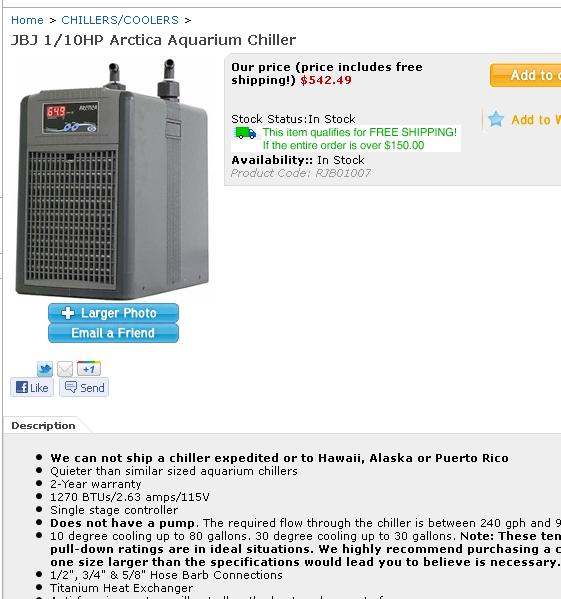My original suggestion is now even more pertinent since you now seem to think insulating would be a good idea. If you feel that dealing with directly insulating the fermenter or building your own chamber, is easier than putting it in a fridge, that is a personal preference. Something I already mentioned.
You have missed the entire point. Insulating the fermenter is not necessary for ales because the room temperature isn't much different than my desired fermenting temperature.
It takes a couple hours for the fermenter to warm up a single degree. What would insulating it do? Make it take fours hours? That difference is negligible.
I don't know about lagers with the chiller--that is why I asked on this forum. Based on the comments--I think insulating the fermenter for a lager, at say 52F, I think would be desirable. (1) condensation (2) chiller would run longer and wear out more quickly. The cost in electricity, again, I don't care about. We a talking about 50 cents.
If the plate rating is 1.6A, you have a wimpy freezer
Get use to it. It's called the EPA. And they strangle manufacturers with unreasonable mandates. That is an area I have expertise in.
Personally, I buy old toilets that actually hold water and flush (on one try)--and (when I think of it) I am buying appliances up ARE NOT "energy star"--a few years old usually means better functioning appliance. Apparently I failed with this freezer.
As to my expertise:
The EPA is Malthusian. I have no respect for that Agency. Their very goal is drive up energy and appliance costs. It is harmful to every person, business, and employer in America. What they propose via administrative dictate is especially hard on the poor. It is also harmful to the environment. No economy = no clean environment. In short, they are nuts. They spend just as much time and money fighting "green" energy projects as they do traditional sources of energy. Their goal is not efficiency or clean energy or a better world. Their goal is simply--NO ENERGY and rationing via high costs--suffering for suffering's sake. AND of course to guarantee themselves jobs and pensions forever.
You guys are at ~$0.08/kWh? Cheap. I think I am ~$.014.
None of us will have "cheap" electricity for long if people keep buying Sierra Club calendars and supporting EPA mandates. (see above)
This is why your lager issue confuses me. Ferm a lager at ~50F should be so low power to be almost equivalent to maintaining finished beer at 50F. If you put them in there hot, and tried to ramp to 50F, I could see issues with a runaway ferm the freezer would have trouble with dropping.
The wort went into the freezer at about 75F. I allow the freezer to drop the to 45 (takes awhile). I oxygenate well and then pitch the yeast and ferment at about 50F (allow the temperature to ramp up to 50-52F). The yeast being pitched is a large, active, slurry, (always for lagers) at 45F--so it starts within minutes typically.
One thing--I don't really agree that lagers are not vigorous fermenters. They may not be as active as ales, for sure, but they do not compare to finished beer. They certainly go we bit crazy ramping from 45F to 52F--until the freezer kicks on. IME, they steadily crank for a week or so.
Again-- I think the volume of beer has a lot to do with it. The freezer was totally full. And apparently the freezer is some greeny's cruel joke at keeping food warm--and screwing with my homebrewing.
I'll let you know how this weekend affects the chillers performance. Your's and others comments have convinced me not to both bother with a lager unless I insulate the conical to some degree. Again, not for costs, mostly the condensation issue--I saw what the lines did on the ale--until I wrapped them.
I will make another ale this weekend, and then perhaps, next weekend a lager once I figure out an easy/cheap insulator. Perhaps "Project Manager's" (dog) blanket.
Question:
Right now the chiller kicks on to keep the bath at temperature more often than the pump in the bath kicks on to cool the ferment...
The bath raises about 2F every hour-and-half (without the fermenter pump kicking on). The R/V pump is constantly on to the chiller. Although it is outside the bath--I assume the moving of the water constantly--speeds the heating of the bath water.
The r/v pump move water at 600gph and chiller only requires a 250gph. Would slowing the water down--slow the warming of the bath water?
Alternatively, is it possible to just have the pump come on right before the chiller comes on?





















































![Craft A Brew - Safale S-04 Dry Yeast - Fermentis - English Ale Dry Yeast - For English and American Ales and Hard Apple Ciders - Ingredients for Home Brewing - Beer Making Supplies - [1 Pack]](https://m.media-amazon.com/images/I/41fVGNh6JfL._SL500_.jpg)





